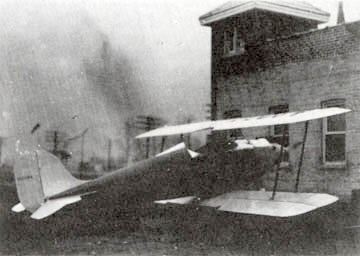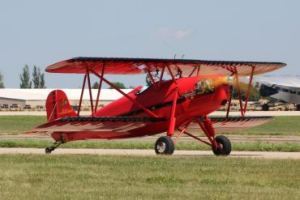|
A Curious History by Barry Talor
I was recently honored to review the Rose Parrakeet chapter of Chet Peek's upcoming book on the Continental A-40. Chet is an accomplished aviation historian as well as published author. He also has many hours flying behind A-40s and maintaining them. This seemed like an excellent opportunity to make sure everything went into print as correctly as possible. Much misinformation has been printed about these Parrakeets through the years

Here is X12084 as equipped with Heath-Henderson engine and steel propeller. Vertical fin looks larger than production models as do the elevators. One of the first items I questioned was the assertion of the Parrakeet being certified with Group II Approval in 1935. Your author had 1933 ingrained in his brain for a very long time. A check of Mr. Rose's log books shows that X13677, the first production model, with Continental "A" (that's the way it was recorded) first flew at Palwaukee, Illinois on July 8, 1934! Barry is wrong again! Further perusal of the log book shows that on September 8, 1935 the same ship flew as NC13677. Further consultation with Chet showed that during the '30s up until '37 the second number in the N number indicated the year the number was applied for. That helps to explain the 1933 misconception I had been so comfortable with for so long.
Well then did the prototype NX12084 fly in 1929? Well maybe. The proto was supposedly flying in '29 according to references found in the letters and papers of Jack Rose. The problem arises when we go to the log books and find no time logged from September 8, 1929 (the 8th of the month is sure coming up a lot) until May 24, 1932.
Is it just coincidence that the missing years coincide with Prohibition? Well, maybe. Among the newspaper clippings in the Rose collection are stories about aviation type bootleggers and their misadventures. Among them was one kept in a separate envelope. The picture showed a DH-4 crashed on the ice of Lake Michigan. the story indicates that the pilot was not found but the ship was full of whiskey. Seems an officer was dispatched to guard it overnight but in the morning he had vanished as had the liquor! Food for thought.

Here is a good look at the underslung wing arrangement ala Lincoln Sport. Tripod cabane arrangement is clearly shown. Engine must be a very early serial number. The A-40 on the Airpower museum's Rose [S/N 101, NX13677/NC13677/NC1367 G] is S/N 151. Could it be the same engine?
The first ship was originally powered by a Heath Henderson engine. These mills never were much. Later photos show NX12084 with an A-40 in the nose. These shots were most certainly taken in the 1930's. No mention of this ship is made in any of Jack Rose's log books, nor has the final fate of this aircraft been recorded even though the number lives on assigned to the prototype Rhinehart-Rose #505.
Further study of the logs revealed two N-numbers that I had never heard of and am still not sure where they fit. Apparently the ships were not completed or delivered in chronological order. This new revelation brings to four the number of 'Keets" sold in California, S/N 103 through 106 but not in that order

Mr. Rose and the "proto" playing in the snow. This shot highlights the many differences between this and production models. Note step in side of fuselage.
The whole point of this "confession of ignorance" is that we as caretakers of these machines are also entrusted with their history. It is as much our responsibility to record accurate history as it is to "Keep the antiques flying"!
Barry Taylor
This article reprinted from the AAA/APM web site. It originally appeared in "The Parrakeet Pilot", fifth issue, page four. It is reprinted with permission of Barry Taylor and the Parrakeet Pilot's Club.
Parrakeet Pilot's Club
P.O. Box 127
Blakesburg, Iowa 52536
This page has been archived from the original Rose Parrakeet Pilot Club website. It is presented for educational and reference purposes only.
|

